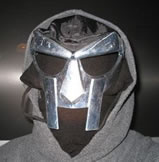
Captain America is my favorite superhero. There, I said it. Batman may have a more interesting legend. Wolverine may be part of a better-plotted gestalt. Spider-Man may look cooler. But still, I love Cap the most.
Why?
Maybe it’s because he made it okay for nerds to also be patriots? Maybe it’s the irony of a blonde-haired, blue-eyed Christian being the scourge of the Nazi

John Byrne was the second best Cap man.
party—everything they dreamed of, coming to destroy them. Maybe it’s his raw idealism, something that, especially in the post-Frank Miller Dark Knight universe is sorely lacking. Maybe it’s because the ultimate Frisbee player in me admires the way his shield bounces around every panel and always seems to come back to him. I don’t know, and I don’t care. I just know I dig the dude. And one of the sorriest things in comic books is that he’s rarely been given a writer who understands his true nature. I enjoyed Mark Millar’s portrayal of Ultimate Cap, but that wasn’t Cap. I wanted the John Byrne Captain America—the one who believed in his country’s ideals more than its leaders. And it wasn’t until Ed Brubaker that we really got one.
From the beginning, Brubaker wove Cap’s WW2 throughout his legend, fleshing out the Red Skull (no pun intended) so that he became less of a cipher for evil and more of a bitter-but-intelligent National hero—sort of a Mr. Glass to Cap’s Unbreakable Bruce Willis. In the very first story arc that Brubaker took on, in Cap #1, he wove the cosmic cube and a blurry past, marked by a time-out from life in suspended animation, into Cap’s very personality, showing how troubling it was for Steve Rogers to have missed out on decades of life. Brubaker reintroduced Bucky Barnes, gave Cap a more logical, intimate relationship with SHIELD, and showed how hard it is to be Cap’s coworker, let alone friend.
And then, in issue #25, he killed him.

I hated Ed for that. I hated Joe Queseda, Marvel’s Editor-in-Chief, for The Civil War, and I hated Ed for killing off Steve Rogers. And then I hated him more for not bringing Steve back. But then he created a Bucky with depth and passion, a Falcon who was so much more than a sidekick, and a Nick Fury with depth. And then I appreciated not having Steve around. I even stopped missing him, even though I knew he was about as dead as Bruce Wayne (i.e., he’s not dead at all).
Now, two issues deep into Captain America Reborn, it all starts to make sense. And it’s clear that Brubaker knew where he was going with this right from the beginning. It all started with the Red Skull trying to take over Cap’s body, with the cosmic cube and alterations of time and memory, and it looks like that’s where it’s going to end.
What happened in Reborn? Basically, we learned that Zola/Skull/Faustus’ assassination was never designed to kill Cap, it was designed to freeze him in the time stream so that Red Skull could occupy Cap’s body. Just as the body was pulled through the time stream into Zola’s lab, Sharon saw it and destroyed the machine. As a result, Skull had to jump into someone so he jumped into another Zola-type construct. But what happened to Cap? Well, he is now unmoored. His consciousness is reliving his experiences without the linear boundaries of time. The question now is, when will Cap stop moving and where is his physical body?
Most of the time, writers use flash-backs to fill pages or kill time. They’re useless and, usually, not done well. But Brubaker has been using them to paint a full picture of America’s greatest hero . . . And of Cap’s allies and enemies as well. With the exception of Captain America #601, Brubaker has dropped clues and hints throughout his run on Captain America as to what was coming. Yes, time travel is generally a stupid copout. Yeah, I’d have preferred it if the gun Sharon shot Steve with was some of kind of virus that stopped his heart and brain activity, but somehow his super soldier status revived him, but that would be a tough sell, particularly since there’s been talk of an autopsy having been done and we’ve never seen any evidence that Cap is a Deadpool-like healer. He’s tough, but he can’t survive having his organs removed or his heart stopped. Or at least there’s never been any indication in the past that he could do
such things.
Plus, the use of time has been such an important part of Brubaker’s style on this book that it just makes sense here. We see Cap re-live important events in his life and struggle to change them, but also we see him frightened about the side-effects if he does try to change them. And as much as I hate the tie-ins to Dark Reign, here it makes sense. Captain America needs to come back to take down Norman Osborn. If Marvel tries to do anything less, they’ll be disappointing many fans who are already irritated at everything that has happened since Civil War.
Epting rocks.
A final word about the art: Butch Guice is the artist for Ultimates, and seems incapable of drawing a non-Ultimate Cap. Too bad. Brubaker has had some great artists who know how to draw pulp during his run, most notably Epting, but here the art is dark without form. This is not Guice’s best work. It’s not enough to turn me off, though, because even mediocre Guice is better than most. (But not better than Epting.)




